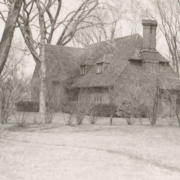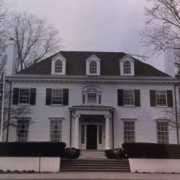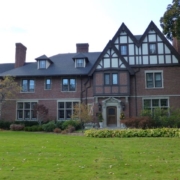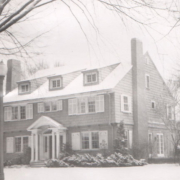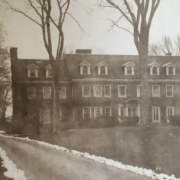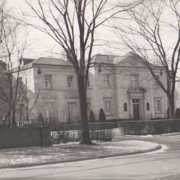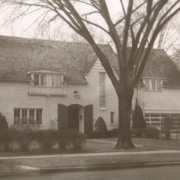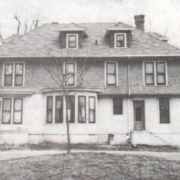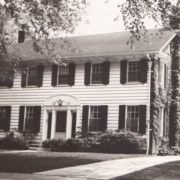Historical Architecture of Grosse Pointe – Albert Kahn’s Hidden Gem – 1017 Lake Shore
When we think of Albert Kahn’s work in Grosse Pointe we naturally gravitate towards his large-scale projects, such as the Edsel and Eleanor Ford House, 257 Ridge Road, the Grosse Pointe Shores Municipal Building and 880 Lake Shore (to name but a few).
However, when you reach the corner of Lake Shore, by the Ford House, heading towards St. Clair Shores, have you ever turned your head to the left and wondered who designed the quaint English Cottage hidden amongst the trees?
Designed by Albert Kahn 1017 Lake Shore is arguably one of his least talked about homes and is probably the most modest Kahn building in the Grosse Pointes. But size isn’t everything, and this secluded cottage has just as many intriguing details as one of Kahn’s larger mansions, and probably more charm.
Originally part of the Edsel B. and Eleanor Ford estate, the English Cotswold cottage was built in 1930, after the completion of the main estate in 1929.
The House is located on a large lot (200’ x 250’) and when it was first built it is believed it was surrounded by at least 57 large trees, some of which still remain. The house itself is 2,150 sq ft and is constructed of brick with a tile roof. Like many of his projects the house has beautiful brickwork, highlighted by the striking chimney at the side of the house.

The first floor contains a dining room (17’ x 15’), Kitchen (14’ x 11’) and a large living room (21’ x 18’), which features a large European style fireplace, beamed ceiling and solid oak woodwork. On the second floor there are two bedrooms, sitting room and a bathroom.
Before building the Ford Estate Kahn traveled to the Cotswold’s in England in preparation for his new project. He took numerous photo’s and made many sketches on each and every detail of the English style, which is reflected in the Ford House and certainly visible in the design of 1017 Lakeshore. The house looks as if it has been plucked straight out of England and dropped onto the corner of Lakeshore, a testament to Kahn’s attention to detail and level of authenticity in this design.
In 1943, aged just 49 Edsel Ford died. Mrs. Ford put the entire estate up for sale for $500,000, but because of the high taxes a buyer wasn’t found. Mrs. Ford proceeded to set up a $15 million endowment, to ensure the estate would be used for the benefit of the public. It is believed 1017 was divided from the main estate at this time and was sold as a private home to Theodore A. McGraw in 1948.
Mrs. Ford would later describe Kahn as “one of the country’s greatest architects”.
Kahn was born in 1869 in Germany, the oldest of eight children. In 1879 the family left Germany and relocated in America, eventually settling in Detroit. Kahn had no formal education beyond seventh grade. At the age of ten he became an office boy in an architectural firm in Detroit. As a teenager he went to work for the renowned firm of Mason and Rice, creating sketches and learning his trade. In 1891 Kahn was awarded a $500 scholarship (by American Architect and Building News) and traveled to Europe for one year, spending time in England, Belgium, France, Italy and Germany. It is believed a lot of the design that went into his mansions of Grosse Pointe was inspired from his time in Europe.
When Kahn returned to America, he became chief designer for Mason and Rice and went onto form his own architectural firm with George Nettleton and Alexander B. Trowbridge.
Kahn designed over 20 buildings in Grosse Pointe, from the modest to the massive, and sadly at least half a dozen of his major works have been destroyed.
Those that still exist include the C. Goodloe Edgar mansion at 880 Lake Shore, along with Rosecroft at 266 Lakeland and the Philip H. McMillan Residence at 8 Carmel Lane. The home located at 1017 Lake Shore may not be as big or as grand as Kahn’s other projects in Grosse Pointe but this English Cottage nestled amongst the trees is equally as beautiful and just as well formed.
Written by Katie Doelle
© 2015 Katie Doelle

